Http Www.hgtv.com Design Rooms Kid-rooms How-to-make-a-diy-interior-dutch-door
65 secret interior design tips from the experts
Foolproof interior design ideas for a fabulous home

It's said there's a world of difference between a room designed by a professional interior designer and one done by a home decorator. From balancing colour schemes to hanging artwork, planning lighting and even positioning curtains, designers have a box of tricks that can turn an average scheme into a fabulous space. We've rounded up some of the trade's best-kept secrets to take your own décor to the next level. Shh – just keep it quiet...
Always order samples
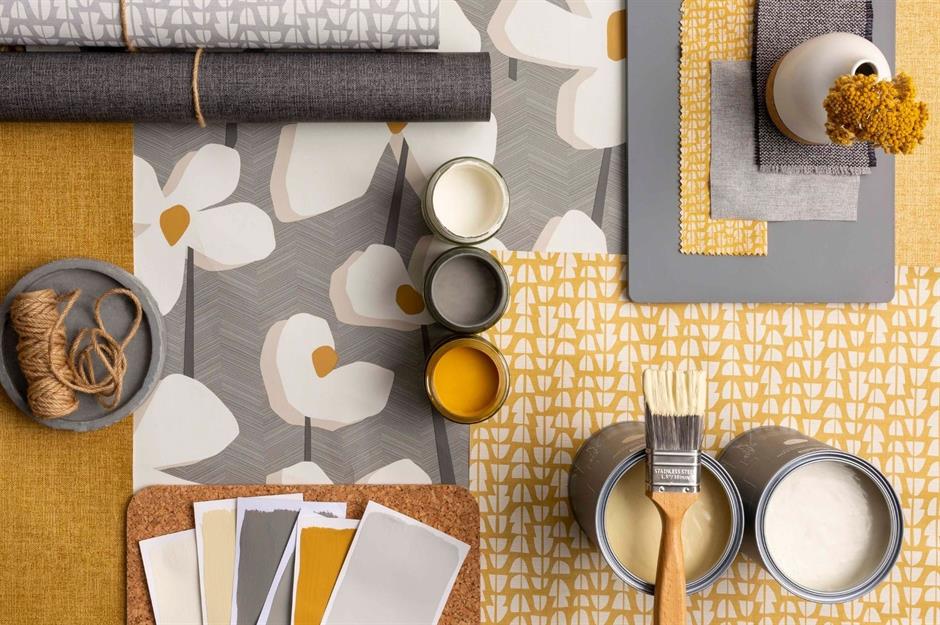
It might sound obvious, but many home decorators overlook samples when overcome with excitement about transforming their interiors. From wallpaper and paint, to flooring and fabrics, you should always order a selection of samples before committing to any specific material. Place the samples together, look at their quality and visualise how all the elements will work together in the room. You could even get crafty and create a moodboard, full of all your favourite swatches.
Go back to basics

Interior design guru, Joanna Gaines, knows a thing or two about creating a gorgeous home. In her book Homebody: A Guide to Creating Spaces You Never Want to Leave, she suggests starting with crisp white walls, since they "can actually provide a neutral and clean foundation to design around that other colors can't, giving you more freedom to get creative with decor." There are hundreds of whites, creams and greys to choose from, so all you need to do is decide which is right for you.
Forget symmetry
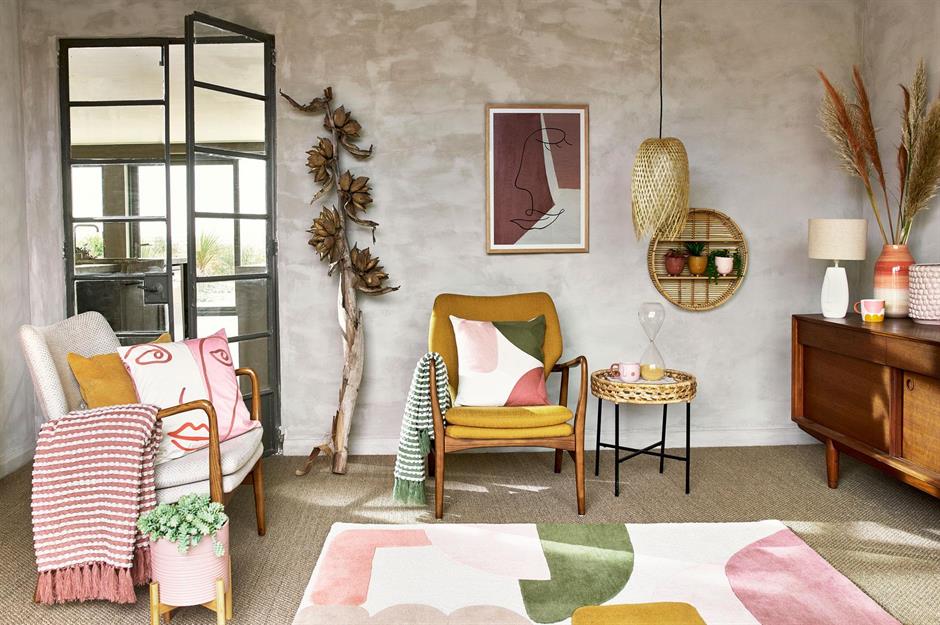
Many homeowners believe that creating a perfectly symmetrical space will result in a flawless interior design scheme, but this isn't always the case. In fact, by sticking with a symmetrical design you could actually end up with a flat space that lacks warmth and personality. Instead, aim for balance. Hang your wall art off-centre, add texture to create cohesiveness and group mismatched pieces of furniture together for a playful twist. Asymmetrical elements will draw the eye and provide plenty of intrigue.
Add a pop of bright red
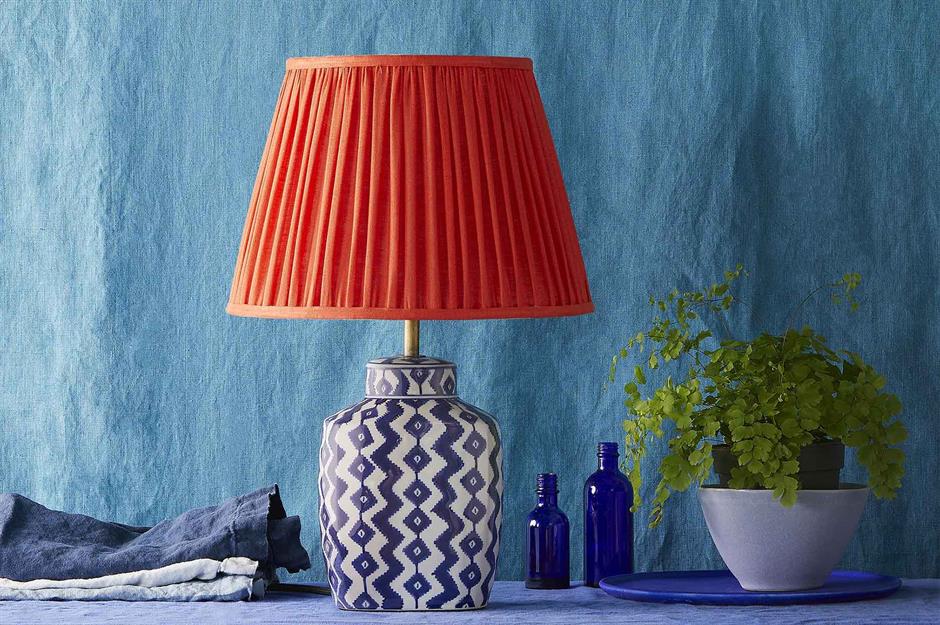
Interior designer Beata Heuman, author of Every Room Should Sing, revealed a simple trick she uses to add that extra something to her projects. Beata says that adding a pop of cherry red can finish a scheme even if it seems like it won't fit with the rest of the décor. For a low-risk option, try adding a bright red lampshade, scatter cushion or picture frame and see if it brings the room to life. It's a tip she has learnt from her mentor Nicky Haslam, the British designer whose clients have included Mick Jagger, Ringo Starr and Charles Saatchi.
Use curves and arches
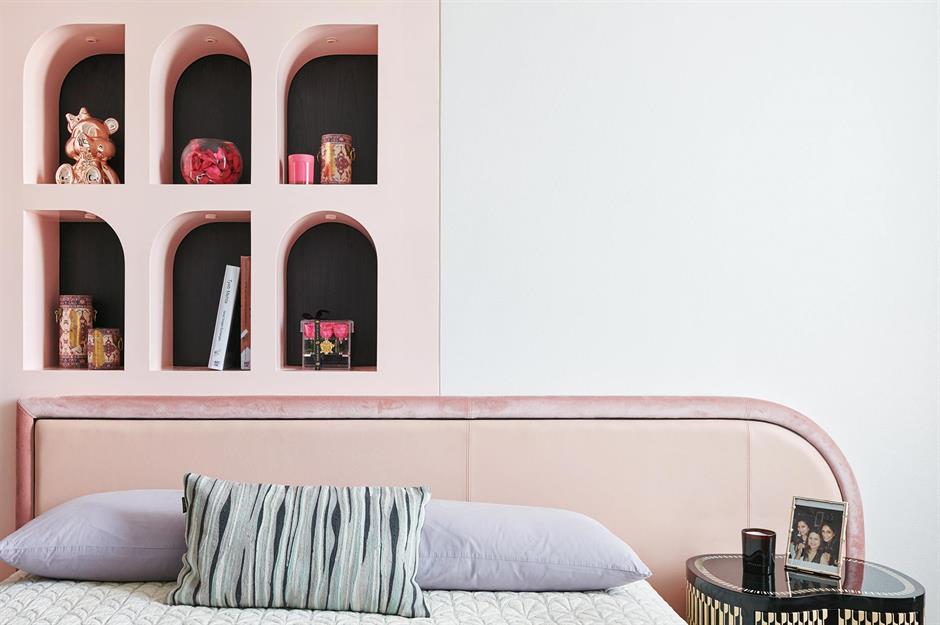
Curves, circles and arches are having their moment, adding a softness to interiors that looks both modern and classic. We love how this clever bedroom design turns a useful storage solution into a cool feature, with added tiny downlighters that make your display glow after dark. It also cleverly echoes the asymmetric curve of the headboard. Brilliant!
Introduce crown mouldings
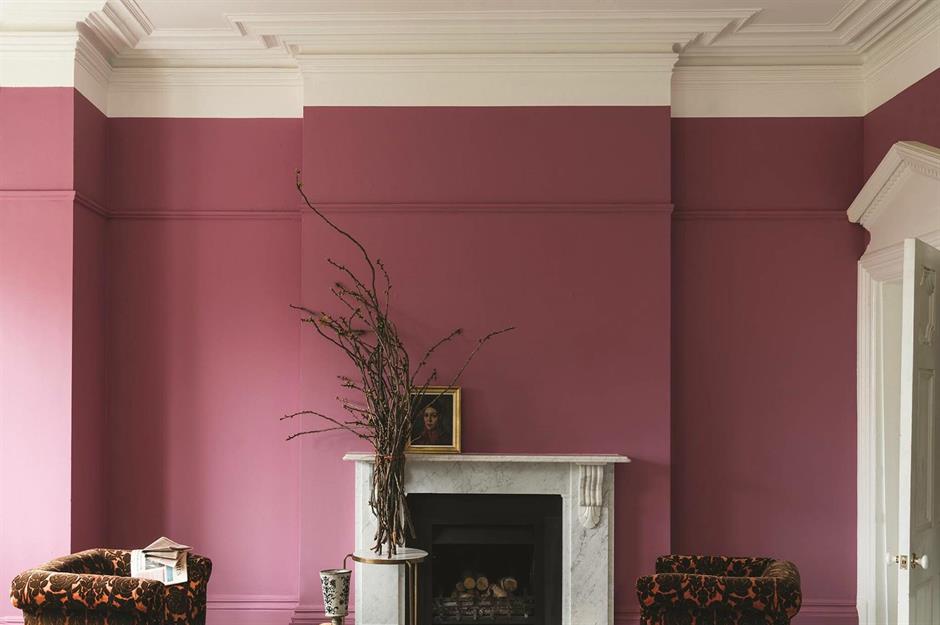
Crown mouldings, or cornicing, is a piece of decorative plaster that runs between the wall and the ceiling. Coming in all sorts of shapes and sizes, it is a common period feature of older houses but adding it into a bedroom or living room is a shortcut to achieving a refined, traditional style.
Paint the shutters

A well-dressed window can take a room from drab to fab in one fell swoop. The latest trend is to use colour to incorporate them fully into your decorating scheme. This design uses a two-tone effect, which makes even budget shutters look like they were made for this stylish bedroom.
Plan thoroughfares
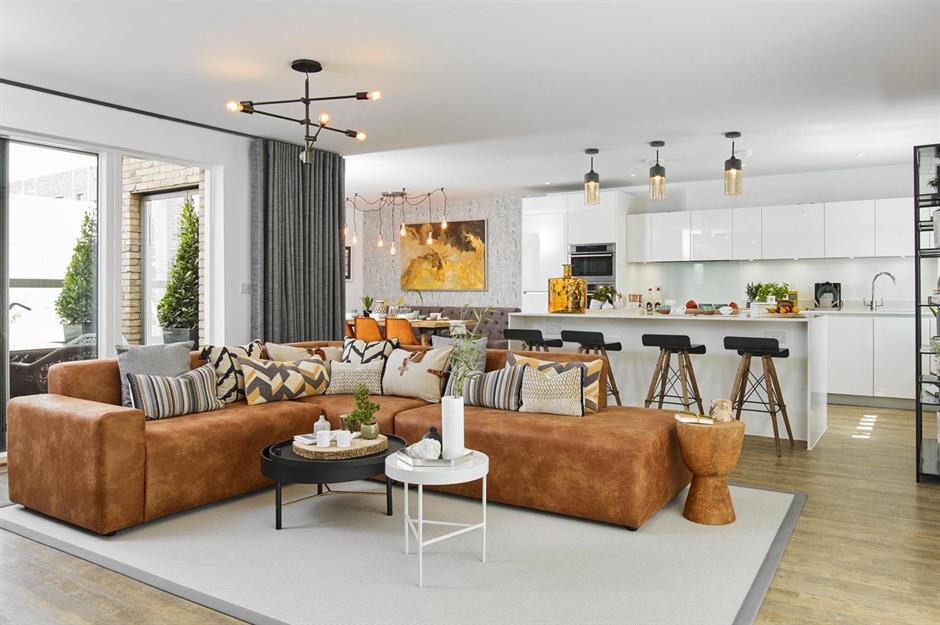
One of the most common design mistakes that non-designers make – especially in open-plan spaces – is cramming too much furniture into an area without leaving enough room for people to walk around comfortably. The most frequently-used thoroughfares in your home should be at least 90cm wide – just enough for two people to pass each other.
Nail the floor plan
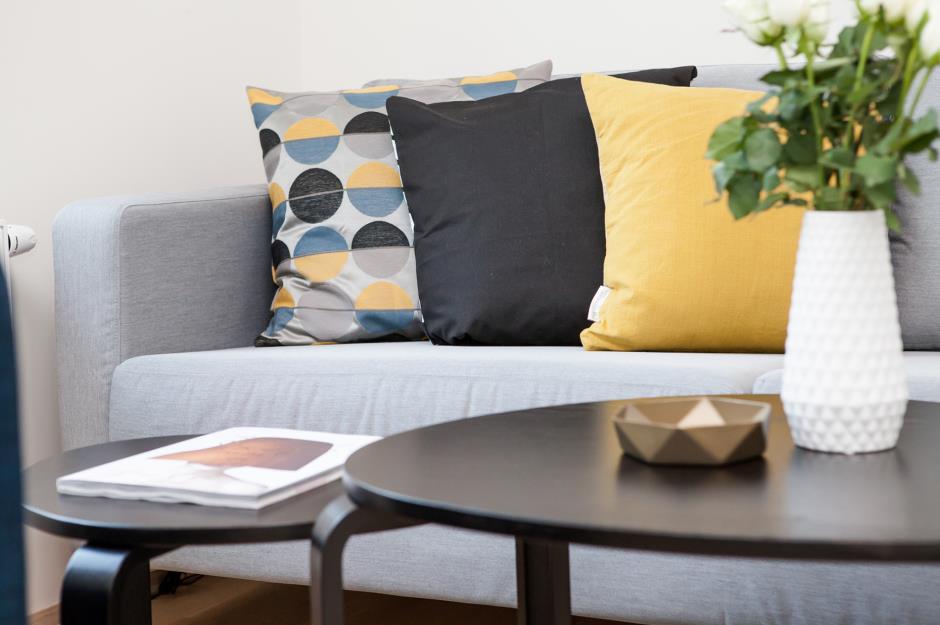
Speaking of leaving enough space, it's also important to make sure there is room to move around in less busy areas of your home. For example, you should ideally leave about 45cm between sofas, chairs and coffee tables in your living room. This gives you plenty of space for sitting and moving around without having to stretch too far for your cup of coffee or shout across the room to have a conversation.
The power of three

Three is most definitely a magic number when it comes to design – as are odd numbers in general. Grouping odd numbers of items – be it cushions, vases, pictures or candles – forces the eye to move around the display, creating a level of visual interest that symmetrical, even-numbered arrangements simply can't compete with.
The 70-30 split
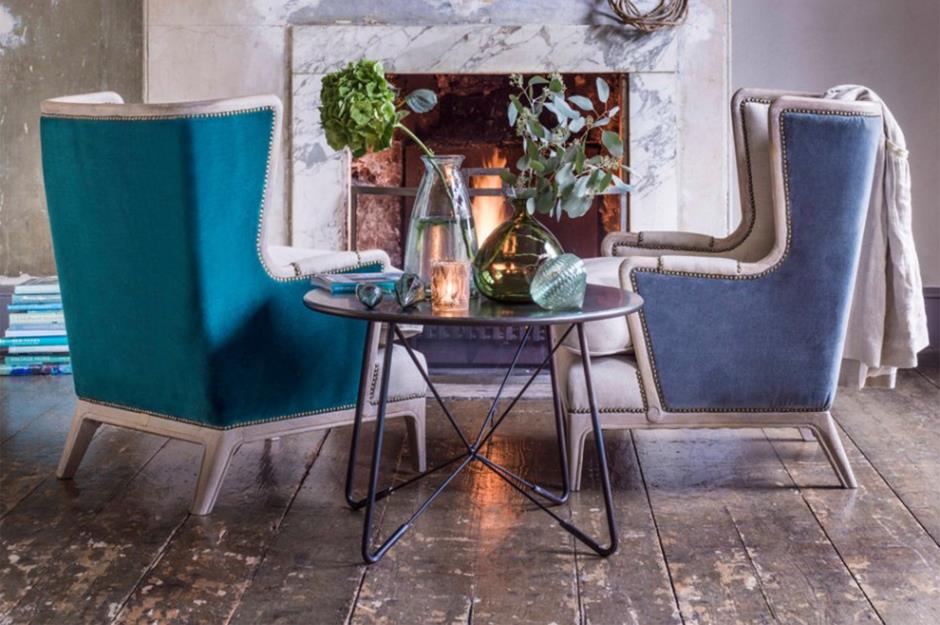
Here's another handy trick for getting your proportions right and balancing different styles within the same space. A guaranteed way to give a room character is to decorate about 70% of it in a particular style then complete the remaining 30% in a completely different style. So you can spice up a largely traditional scheme with a smattering of contemporary items, or vice versa.
Make flooring cohesive
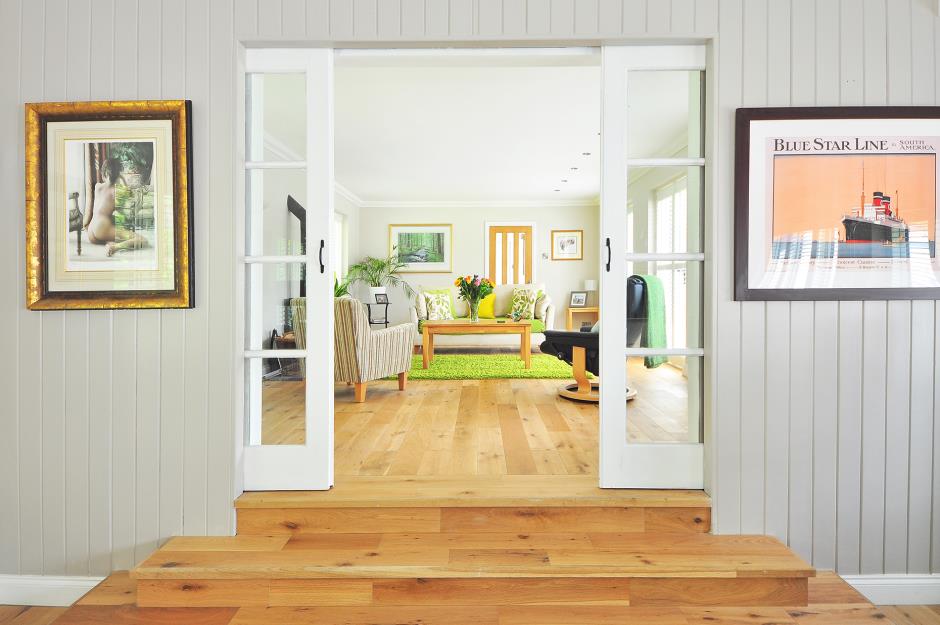
Using the same flooring throughout different rooms or areas in your home is an easy way to make the space feel much bigger than it is. If you have large, open-plan rooms, use rugs to break up the continuity and divide the space according to use. This will create the impression of distinct sitting and dining areas that still pull together as part of the same, larger whole.
Balance your colour scheme
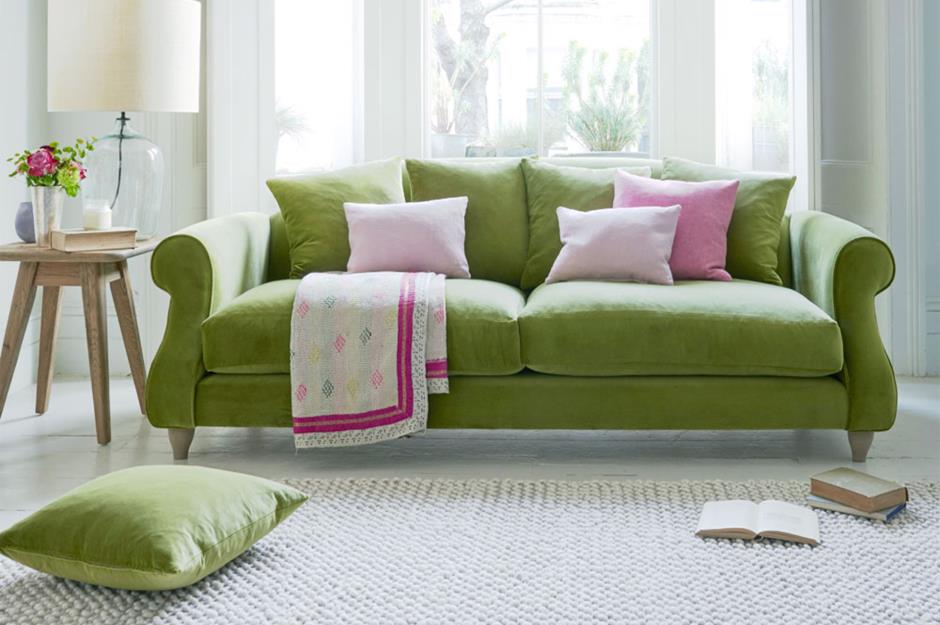
Want a failsafe way to proportion a three-colour scheme? Stick to 60% for your dominant colour, 30% for your secondary colour and 10% for your accent colour and you'll find it hard to go wrong. To add a fourth colour into the mix, split the secondary colour or, at a push, the dominant colour, but never the accent.
Upcycle drab furniture
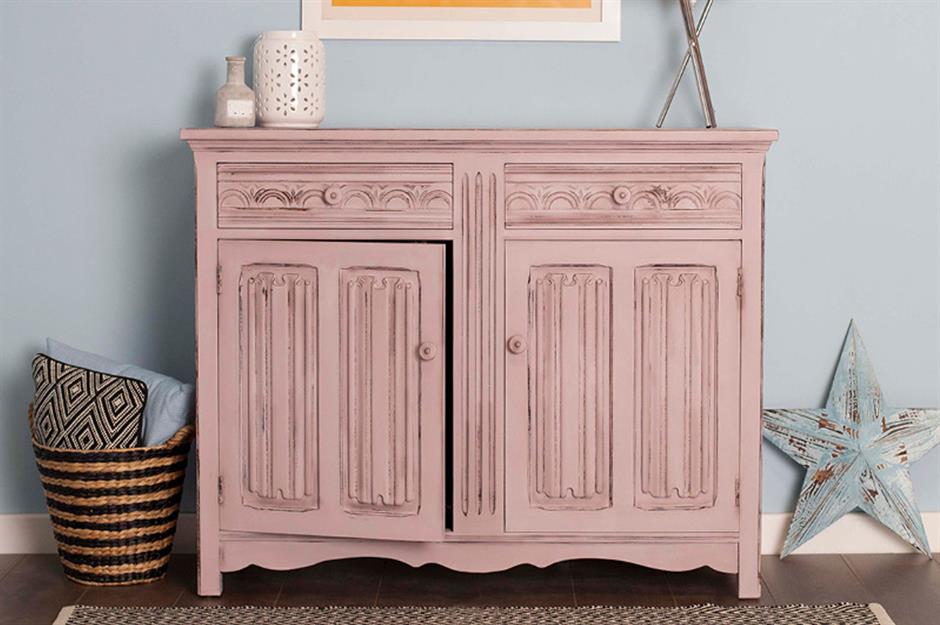
Rust-Oleum / Make it Yours
Being able to transform old furniture is an interior decorator's secret weapon. Whether turning mass-produced flat-pack designs into one-off pieces or sprucing up junk-shop bargains into shabby-chic heirlooms, repainting furniture is a simple way to add colour and character in your home at rock bottom prices. Go for an all-in-one paint that doesn't need primer to cut down on prep time.
Colour block walls

Block painting walls with harmonious or contrasting colours can alter a room's sense of space and also give your scheme a fun twist. To get a crisp finish, always use masking or decorator's tape. Get an instant style fix wby marking out geometric shapes and fill in the blanks with a variety of colours that reflect your personality.
Highlight a fireplace

Brightly painted fireplace surrounds have become an on-trend feature–we especially love this geometric design by The Otto House. What's more, you don't necessarily need a period property to achieve the look. A colourful fireplace surround can become a feature on its own as an original storage solution. Fill the centre with books or candles and use the top shelf to lean art and display houseplants.
Create cosy nooks

Annie Sloan Fabrics / PullCast
Turning awkward or unused space into a beautiful nook is a well-worn trick of many interior designers. Whether it's a window seat or a reading nook, bespoke carpentry creates a stylish solution that fits the space like a glove. Make it comfortable with cushions and side tables and extra marks if you can add in some secret storage space!
Add seasonal updates
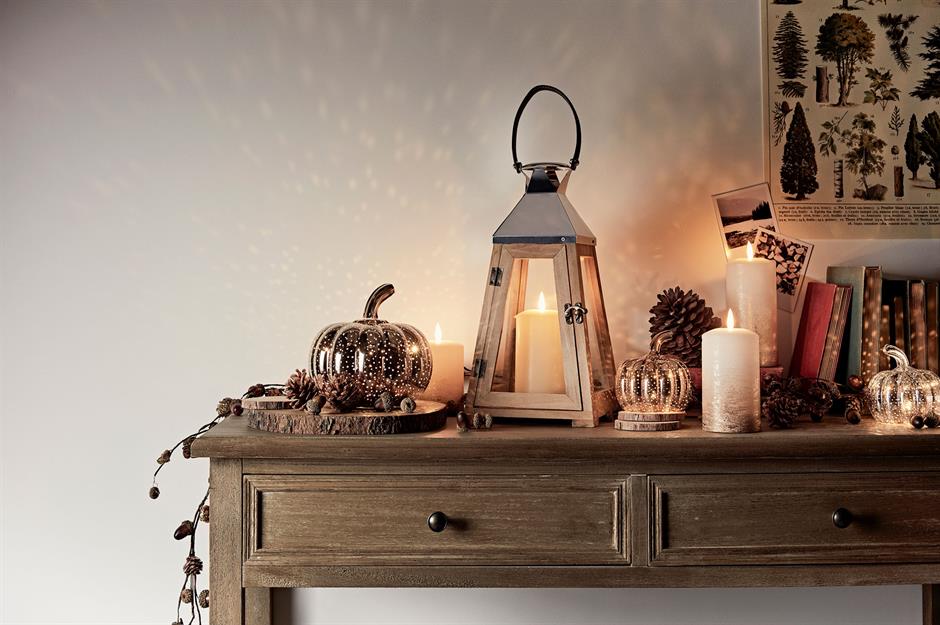
Paying attention to detail adds a professional finishing touch that creates interest and character. An effective way to achieve this is by accessorising with endearing objects that echo the current season. This autumnal display with pumpkins and lanterns will make a warm welcome for guests entering an entryway and can be easily updated for the holidays.
Style bookshelves right
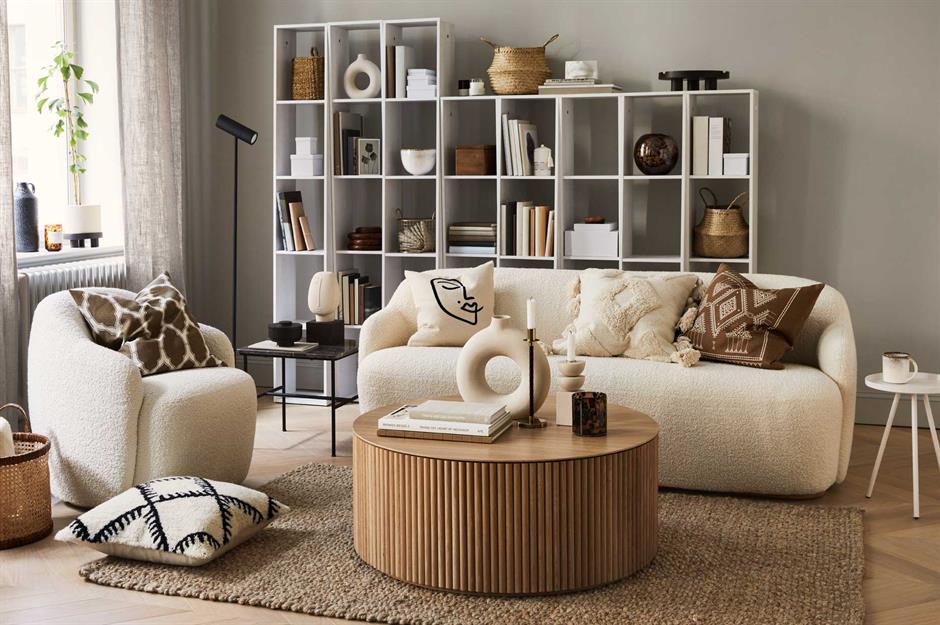
Learning the art of display makes the difference between practical storage and a beautiful feature. Here's how to make your bookshelves Instagram-worthy. Do not overcrowd the space, choose accessories in the same colour and group items together in odd numbers. Use books as objects and exhibit them both horizontally and vertically for interest. Aim for two-thirds books, one-third accessories and make sure to include either plants, foliage or flowers too.
Design around your line of sight
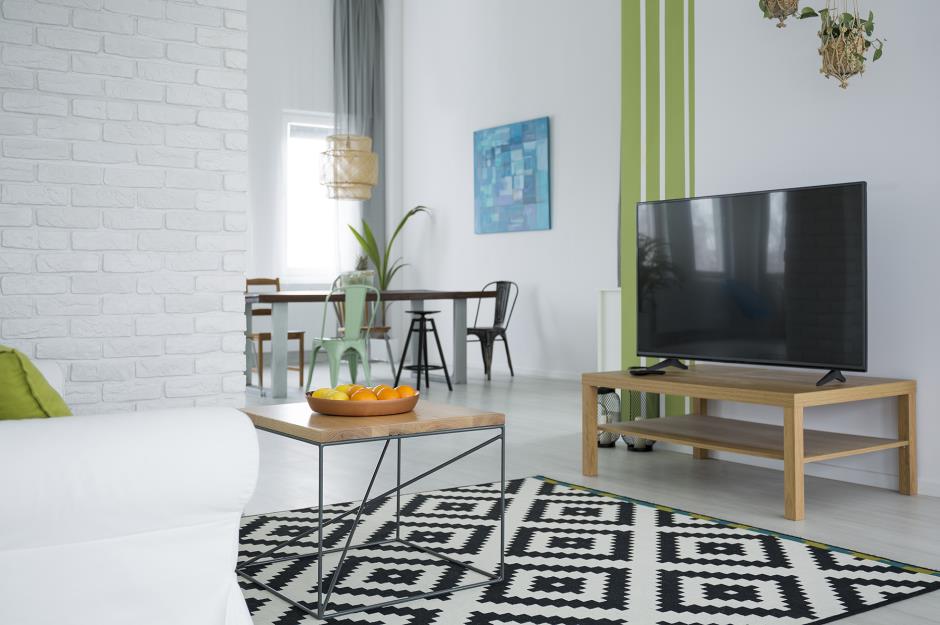
Photographee.eu/Shutterstock
The best height to hang or stand a TV is at eye level in the position you'll be watching it from. So in your living room, you'll want it at the same height as your head when you're sitting down. In a kitchen, you might want to hang it at your eye line when you're standing or sitting at a breakfast bar. The ideal TV viewing distance is about 1.5 times the diagonal span of your TV screen.
Add panelling to walls

Wooden wall panels aren't just for period properties. This decorative feature adds character and texture to contemporary homes too and is a growing trend. What's more, it may look expensive but budget versions made from wood alternatives like fibreboard and OSB are super cheap and, once mounted, can hide wall surfaces that have seen better days. Tongue and groove panels make rustic schemes warm and cosy while framed and mid-height styles suit traditional looks and create a refined finish. Paint the panels in bold or muted tones for up-to-date appeal.
Let in natural light
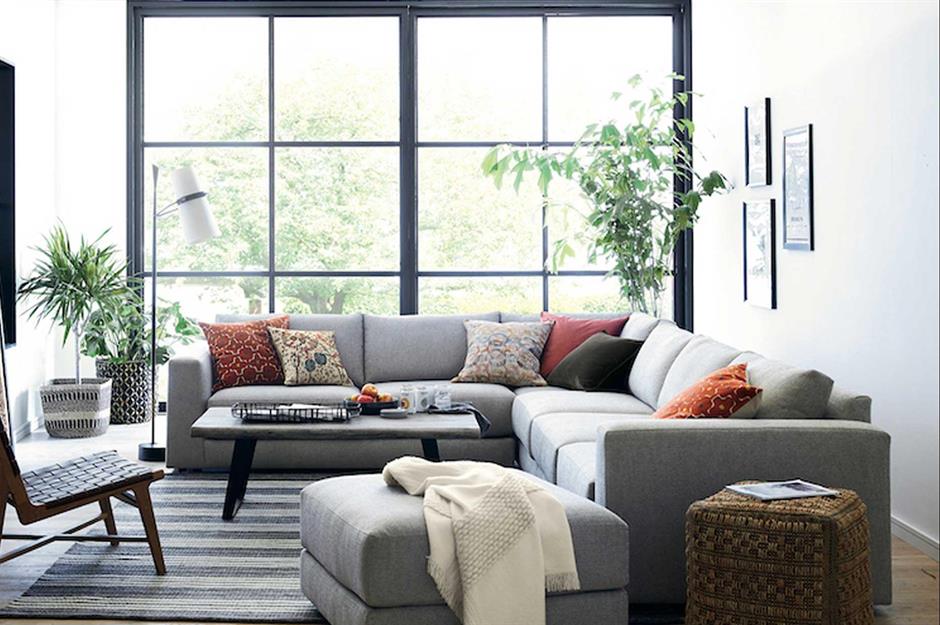
There is no substitute for natural light. It not only benefits our health and wellbeing but it also affects how colours appear. Always look at the light in your room before you decorate it. South-facing rooms benefit from the maximum amount of light whereas north-facing will be darker, therefore, paint colours can seem a completely different hue in one room to another.
Wallpaper the bathroom

You don't necessarily need to stick to tiles in the bathroom. Wallpapering bathroom walls can make a beautiful style statement and it's a great place to use bold pattern and colour you might not use elsewhere. Large prints look especially striking in small spaces so feature wallpaper can transform cloakrooms and downstairs toilets, too. Look for specialist bathroom wallpaper that is wash and splash-resistant.
Accent with black

There is a misconception that black makes things look closed in and dreary but this isn't the whole story. Interior designers use it as an accent because it can actually enlarge the feeling of space by placing the darkest tone on an area you want to 'push back'. The key is to use the bold shade sparingly to ground a room and tie the scheme together. Against a pale backdrop and used in repetition, the overall contrast adds a striking punch and looks undoubtedly chic.
Dress the bed
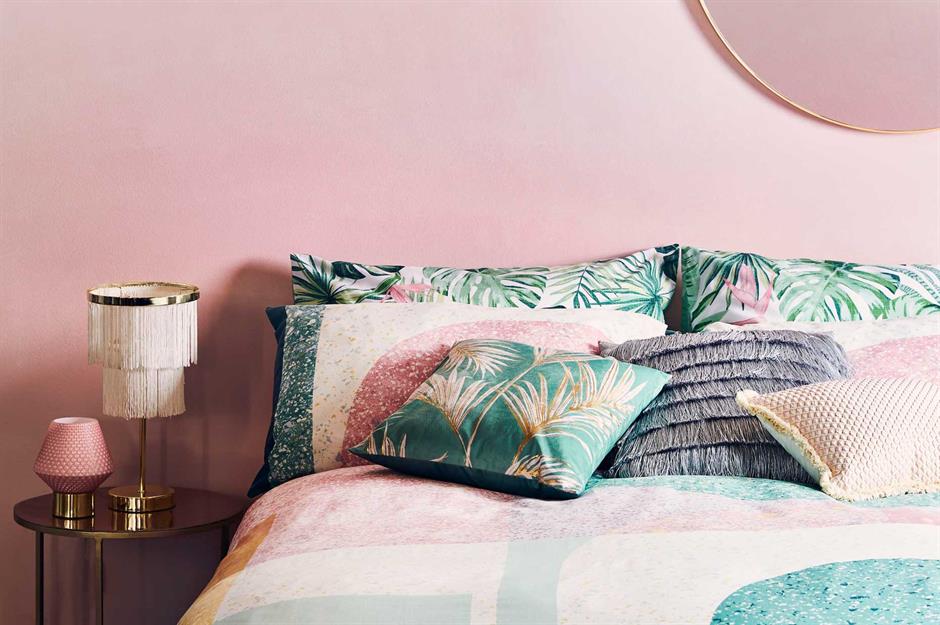
A bedroom should reflect your personality and as the bed takes up so much physical and visual space it certainly needs attention. So, what better way to make an impact than with versatile bed linen that can easily be changed whenever the mood takes your fancy. Look for good quality bed linen in colours and patterns that complement the surroundings and then layer like a pro with propped pillows, a throw blanket and decorative cushions for a hotel-chic vibe.
Layer tonal shades
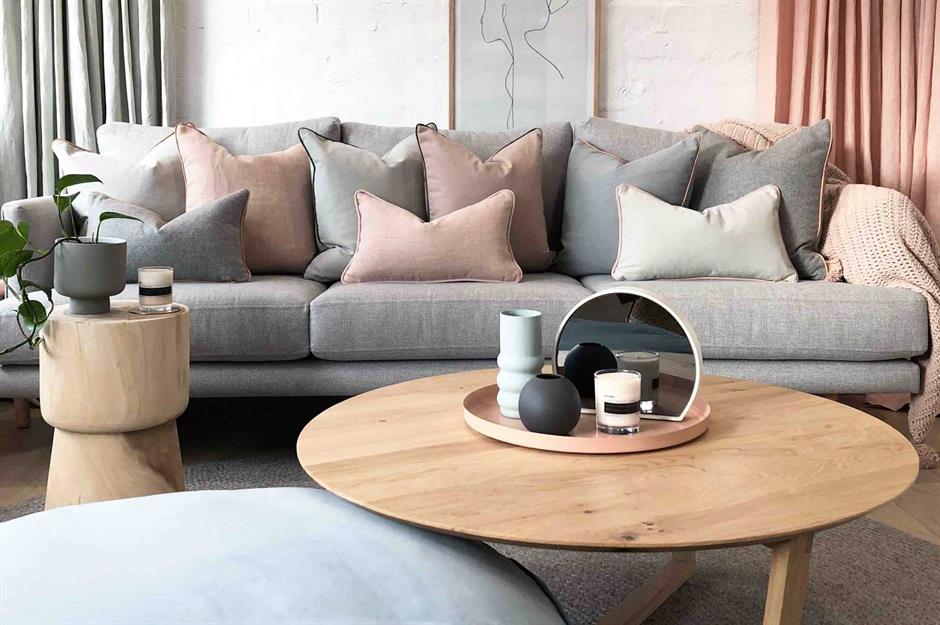
Using multiple shades of the same colour immediately makes a room look polished and pulled together, and it's a trick that you can't get wrong. Layer the same colour or vary hues, adding texture and pattern into the mix. Start with a failsafe array of sofa cushions and then move onto larger items and structural parts of a room, for instance, painting a piece of furniture the same colour as the wall behind.
Invest in designer pieces

Designer furniture only gets better with age, so it's well worth investing. Iconic pieces with dramatic shapes make a great focal point in any room. A Fritz Hansen chair, Ercol sideboard or Arco Flos floor lamp will always attract attention and will never go out of fashion.
Fall in love with stools
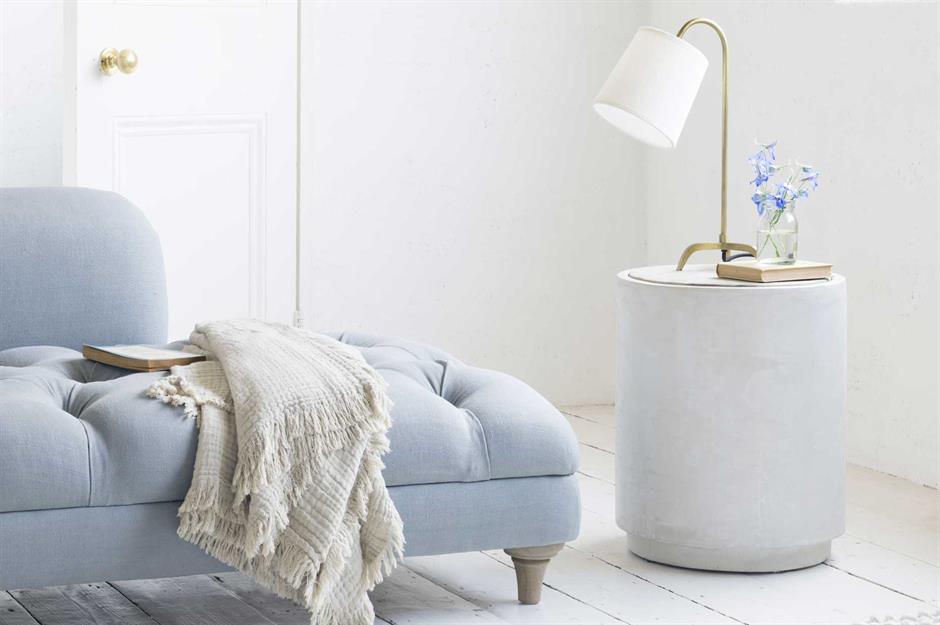
Versatile stools are an interior decorator's secret weapon. This little piece of furniture can be slotted into any design to add functionality. Tuck or stack them at the side of a room when not in use and then bring them out for extra seating when needed. Give them multifunctional purpose, for instance, a lidded stool makes an excellent side table and storage piece in one.
Play around with scale
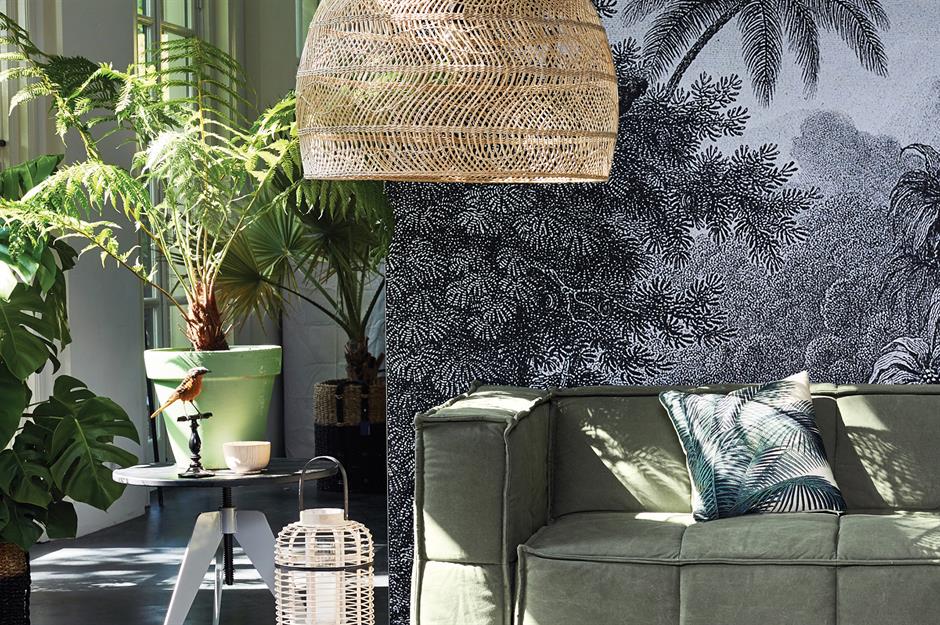
Going supersized gives you instant interior design brownie points. Not only does upscaling a key accessory or piece of furniture make a striking style statement but it also creates a comfortable, cosy atmosphere in a room. Lamps and pendant lights offer the perfect way to play with scale, as they can create a big impact without taking up too much space.
Warm with wood
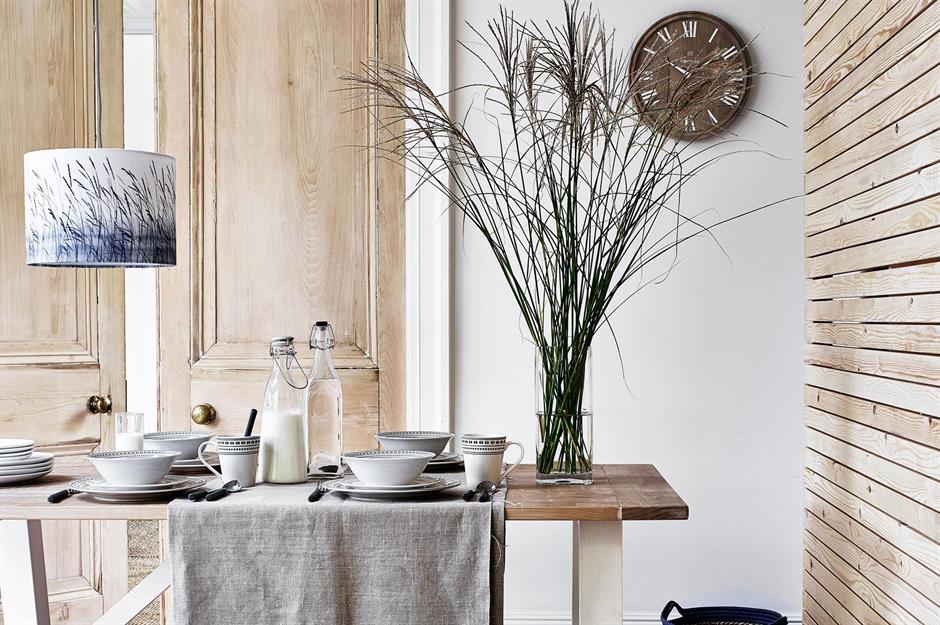
If a room lacks warmth and character, there's no better antidote than wood. While timber accessories and furniture are an easy way to lift a scheme and add texture, a 3D wall can really work wonders in a space without a focal point. It doesn't have to cost the earth either – this chic beach house-inspired design can be achieved with narrow strips of reclaimed wood. For something more rustic, sand down the surface before installing.
Swatch your paint

Before you commit to a wall colour, it's important to paint a swatch and observe how the shade looks in different light conditions. For a mess-free method, paint swatches on A3 pieces of paper and move them around the room throughout the day, observing how they look in different corners of the space.
Measure dining room dimensions

Dining tables often get squeezed in as an afterthought, but it's worth thinking carefully about how much space you need to avoid bumping elbows while you eat. The ideal dining table height is 74cm, with 45cm of legroom and 75cm of space between the table and the wall so you can get up and sit down comfortably. Each place setting should be about 65cm wide.
Let floors do the talking

Just like ceilings, floors are often left as an afterthought in decorating schemes but a statement floor can create striking results that will add wow-factor to the room. The key is to incorporate balance, for instance, if the floor is busy pattern make sure the rest of the room is pared back and neutral. Look for furniture pieces with a small footprint and lift what you can off the floor.
Call on complementary colours
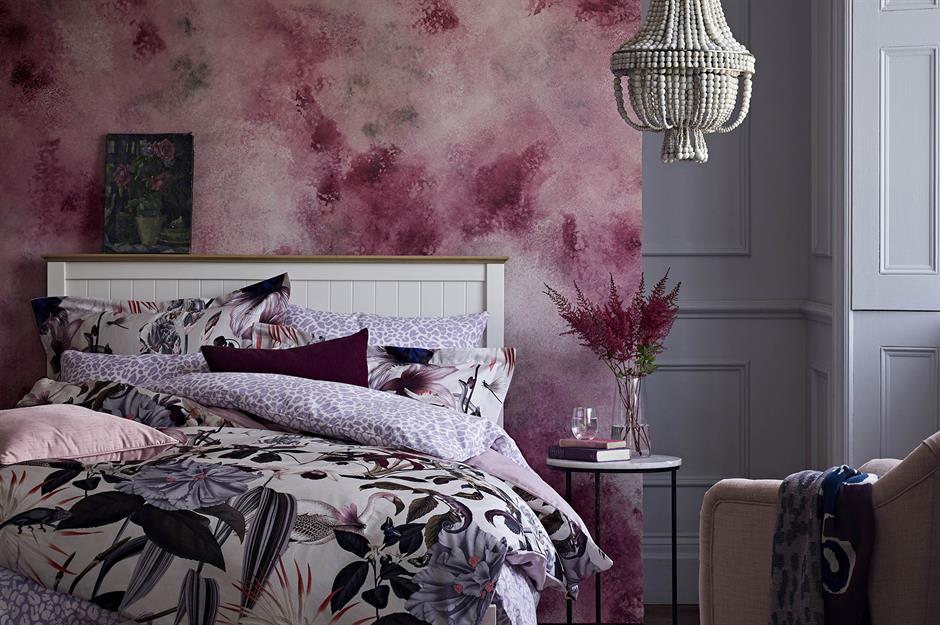
The colour wheel is an interior design essential. It can help you to plan your colour pairings or guide you out of a design rut when you're struggling for inspiration. Use it to help you come up with complementary schemes (using colours from opposite sides of the wheel), analogous schemes (using colours next to each other on the wheel) or bolder schemes such as split complementary or triadic, which use three colours.
Obey the golden ratio
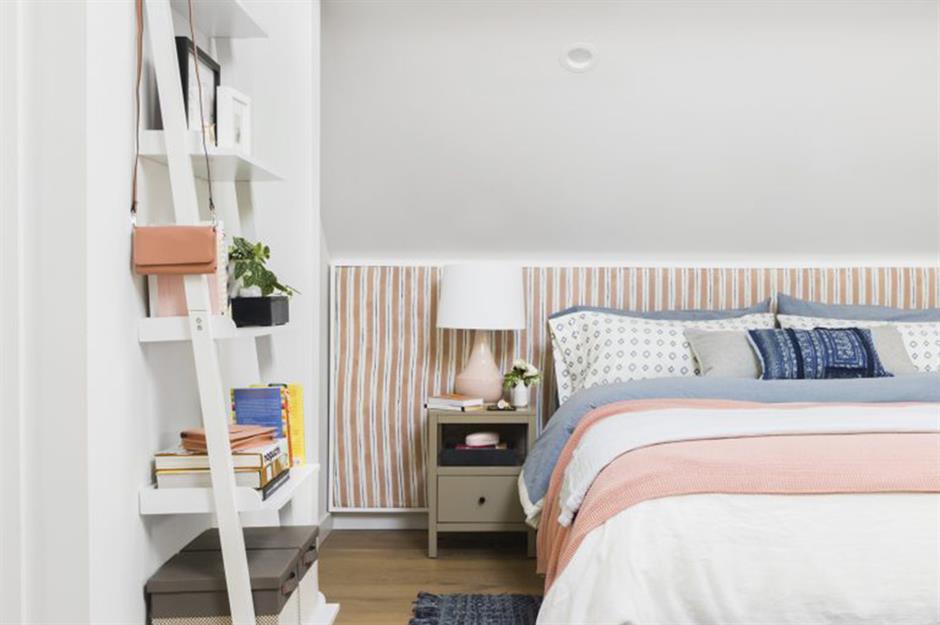
Sara Tramp via Emily Henderson Design
The golden ratio is a proportion often seen in nature and has served artists well for centuries. Interior designers can put it to good use too and create schemes that feel effortlessly harmonious. It works by dividing spaces into approximately two-thirds for one section and one third for the remainder. In this scheme by Sara Tramp featured on designer Emily Henderson's website, the bed and bedside table take up roughly two-thirds of the arrangement, while the shelving unit takes up around a third, creating a sense of balance without feeling too formal.
Repeat home accessories
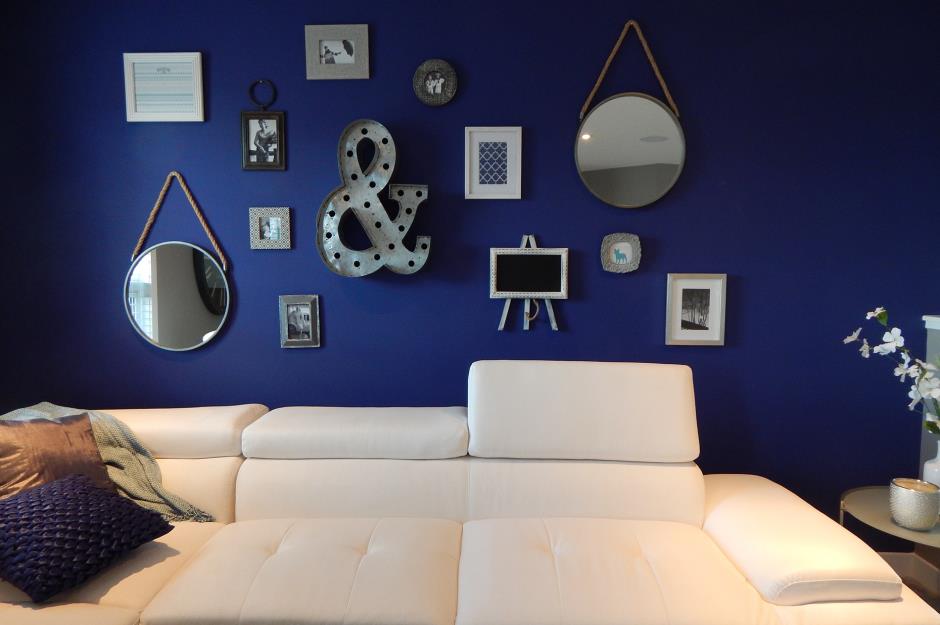
Repeating shapes throughout a scheme is a subtle way to help the human brain read a space as a harmonious whole. Here, for example, a selection of rectangles – in the pictures, sofa and scatter cushions – echo one another, as do the pair of round mirrors, round coffee table and vase. The central ampersand purposefully disrupts the repetition so the scheme doesn't become too predictable.
Orchestrate indoor lighting
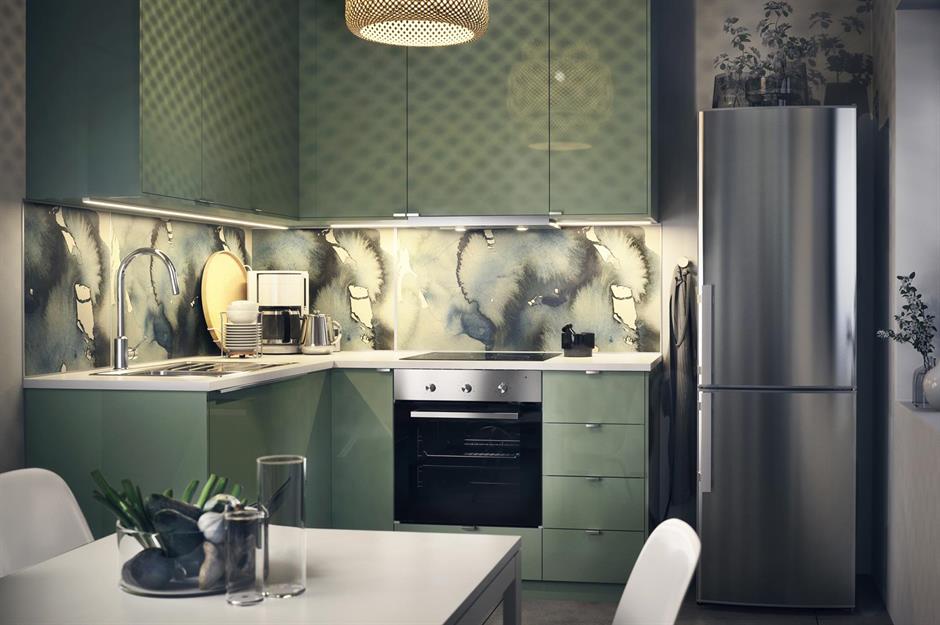
Good lighting is often the last thing most people think about when coming up with a new design scheme, but it really should be the first. You need to carefully plan where every single light, switch and socket will go before turning to decorating, making sure you include a good mix of overhead lighting, task lighting, mood lighting and accent lighting. Using the right colour and brightness of light bulb for the right tasks will also help your room look and perform its best.
Embrace dark colours
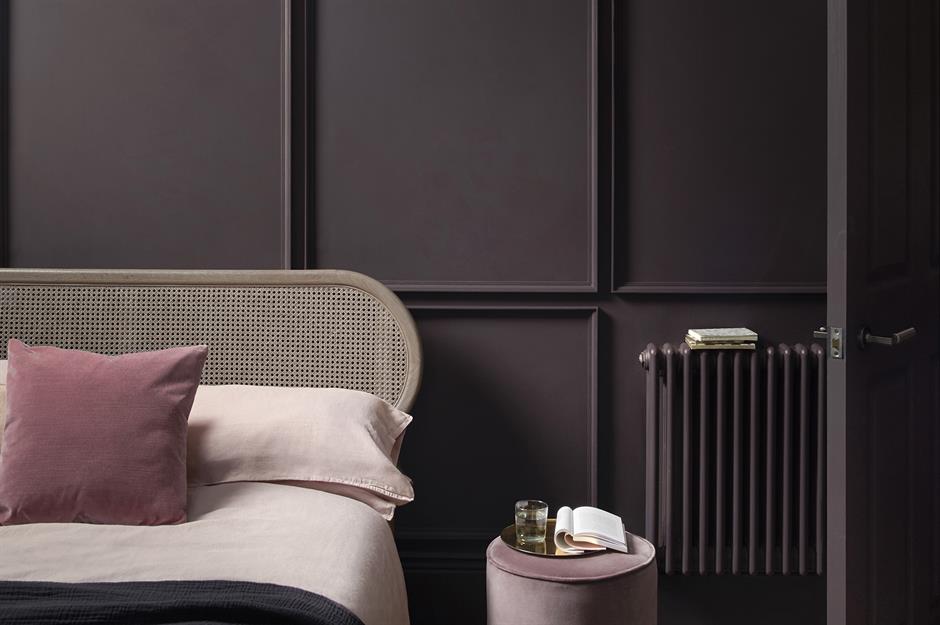
What's the best way to make the most of a dark room? The instinctive answer might be to paint it bright white to reflect as much light as possible. But this can give a dingy room an off-putting, grey-ish tone that feels needlessly gloomy. Instead, embrace the dark side and paint your walls in deep, rich hues to create an irresistibly cosy scheme that draws you in. Lighten the mood with a few bright accents and make sure you include plenty of layered lighting.
Take design tips from nature
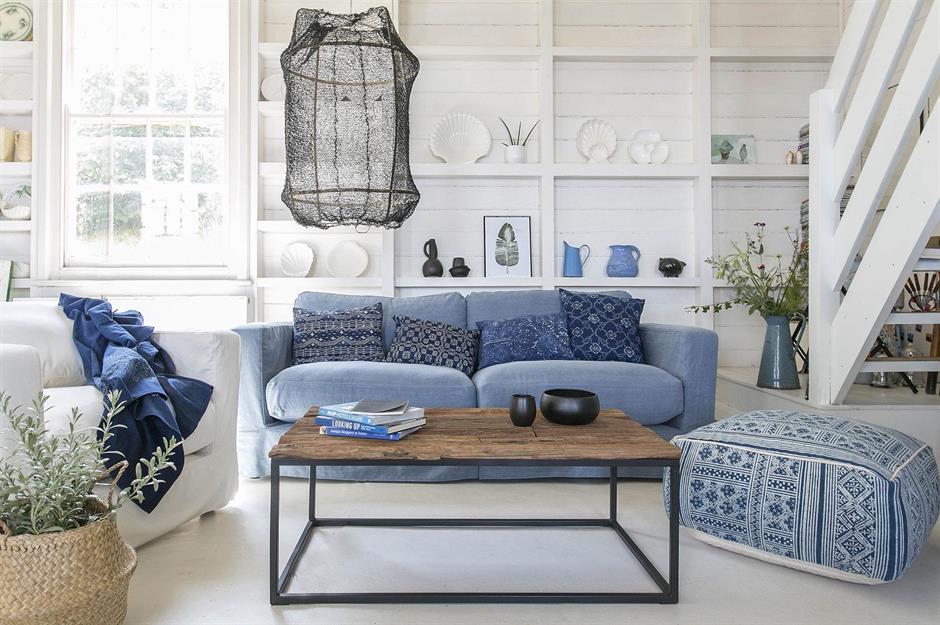
You don't have to spend hours scouring through pretty pictures of interiors to find your dream scheme. Look around and you'll start to see inspiration everywhere – from the soothing texture of pebbles on a beach to petrol shimmering in a forecourt puddle. Take photos and use them to help you create a concept board to inform your design. This coastal-themed room draws on the beach, from the lobster-pot light fitting to the whitewashed wood walls.
Create an outdoor room
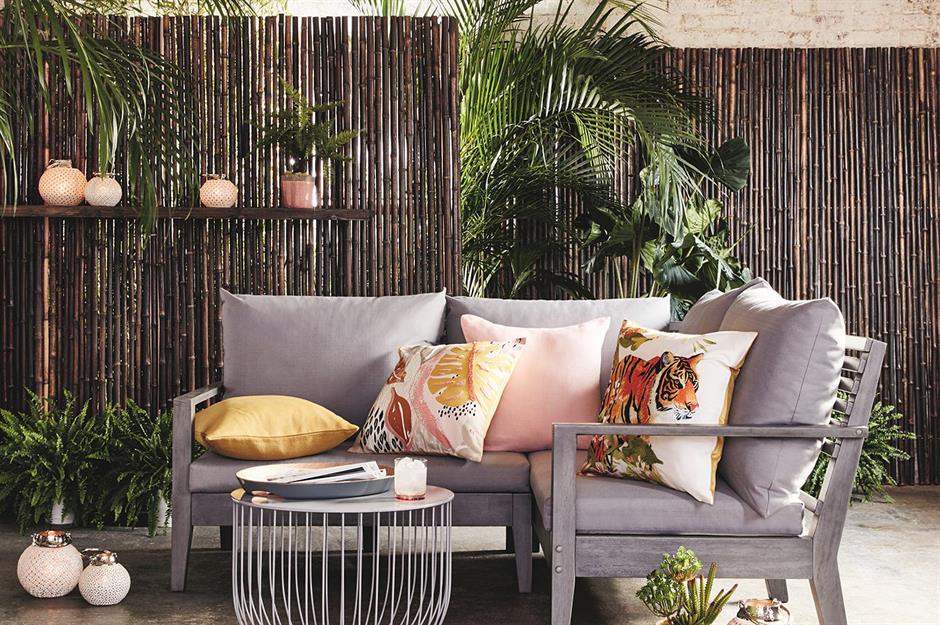
Planning an alfresco dining room for outdoor entertaining?Treat your exterior space as you would a living room scheme and factor in rugs, lighting, comfortable seating and areas to pop drinks. Paint fences in sunny colours, display artwork (you can buy prints specifically for outdoors, to survive the elements) and hanging plants. Lastly, use an outdoor rug to ground the scheme.
Be punchy with pattern
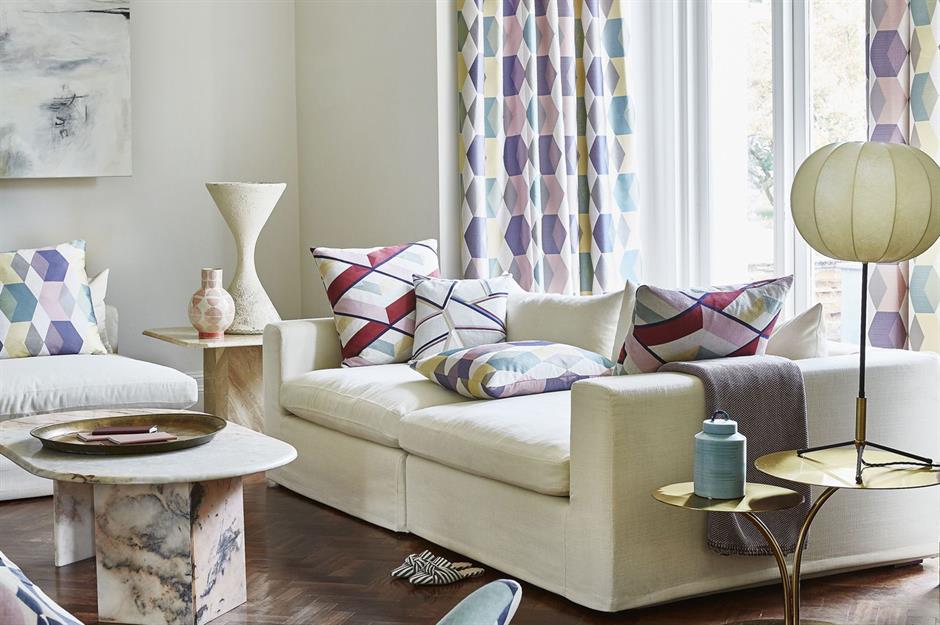
Combining different patterns in the same room can be tricky, but a good tip is to use varying patterns in similar colours, or the same pattern but in varying scales. For example, try small florals mixed with big blowsy blooms, or go for bold geo shapes in different colourways as shown here.
Take floor tiles onto walls

Who says you can't use the same patterned tiles on both walls and floors? Carry them up from the floor to the ceiling for a standout design with maximum impact.
Use your whole room
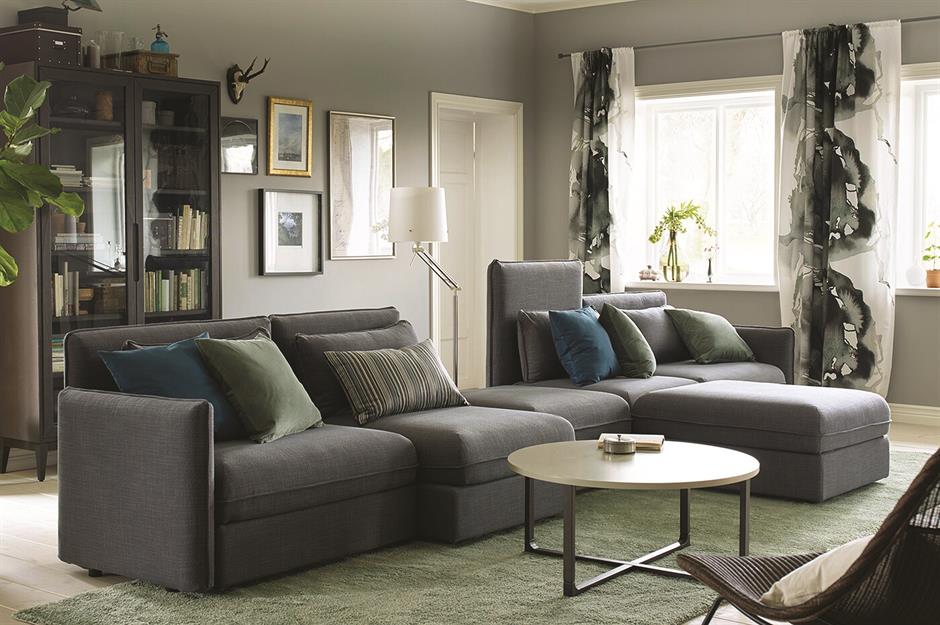
Don't feel you have to line your furniture up along the walls... If you have a big living room, bringing sofas and armchairs into the centre of the space will create a cosy and much more sociable seating space. This works particularly well in open-plan spaces and you can always place a console at the back of your seating so you're not looking at a big expanse of sofa. If your room is too small for a central sofa, keep it against the wall and arrange a few armchairs at angles (facing towards the sofa) to get the designer look.
Don't be scared of negative space
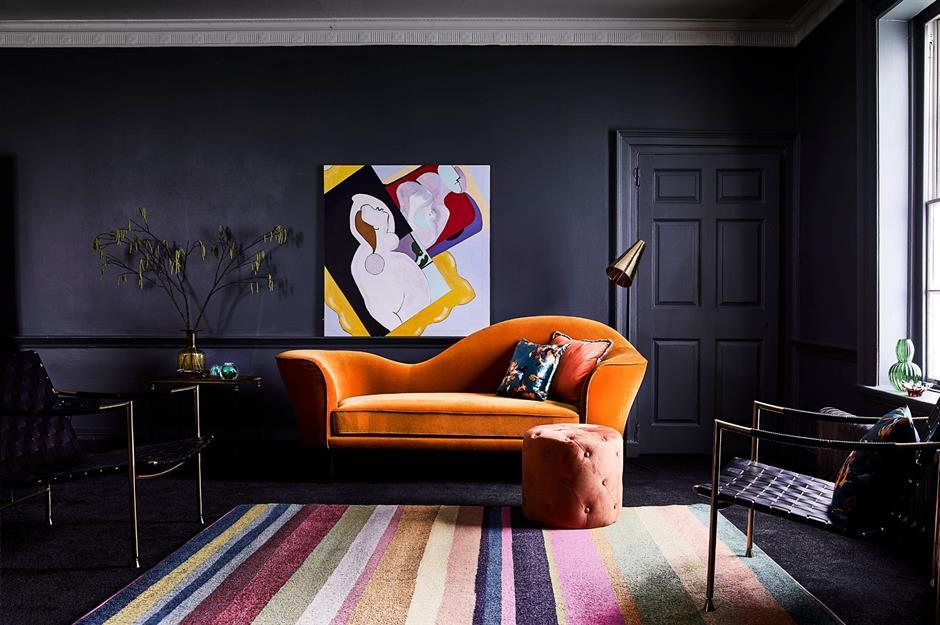
As tempting as it is, fight the urge to fill every wall and shelf, otherwise you're in danger of your room scheme feeling cluttered. Instead, leave a few areas free to gain some much-needed breathing room and a better sense of space. Painting a door and its frame the same colour as your walls is a good trick, as it helps the woodwork to blend in, giving the illusion of a larger blank area.
Go large with oversized wall art
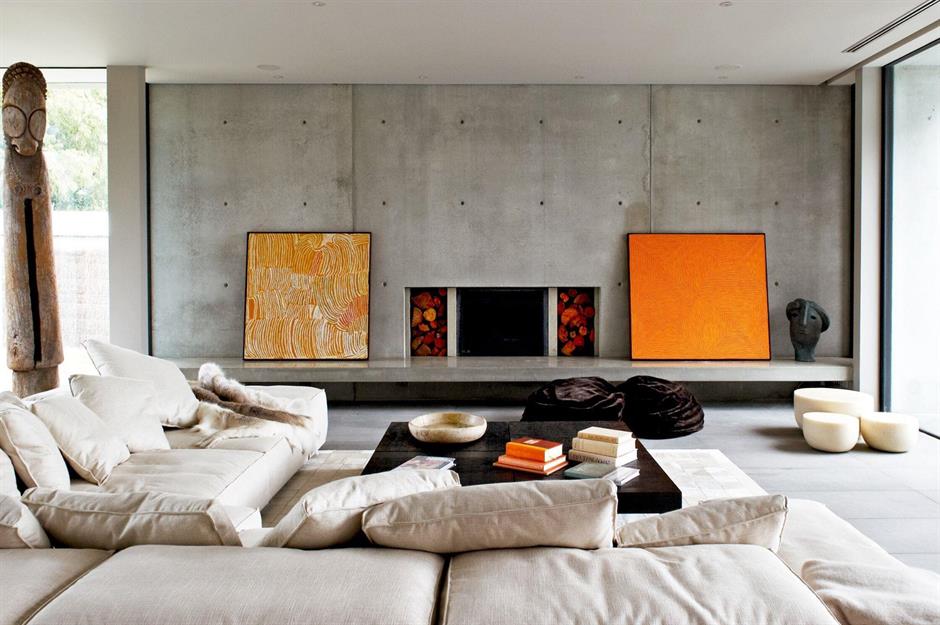
Rob Mills Architects / Architizer
When it comes to art, it's very much a case of the bigger the better. You can fake it to some extent by clustering smaller pictures into a gallery wall, but nothing compares to an oversized artwork that grabs your attention the moment you step into a room, as this scheme by Rob Mills Architects shows. Double up and place two complementary pieces next to (instead of over) a fireplace for maximum impact. If oversized art is outside of your budget, trying offsetting a smaller piece above a sideboard or sofa – hanging it centrally will make it look lost.
Create standout details

Whether it's painting squares (or circles) on a wall, as shown here, creating a detailed mural or going for a freestyle pattern of monochrome dashes, there are so many ways to use paint to create an innovative look on a budget. Think outside the box and carry your painted effect around corners and onto door frames for added interest.
Create a home bespoke to you
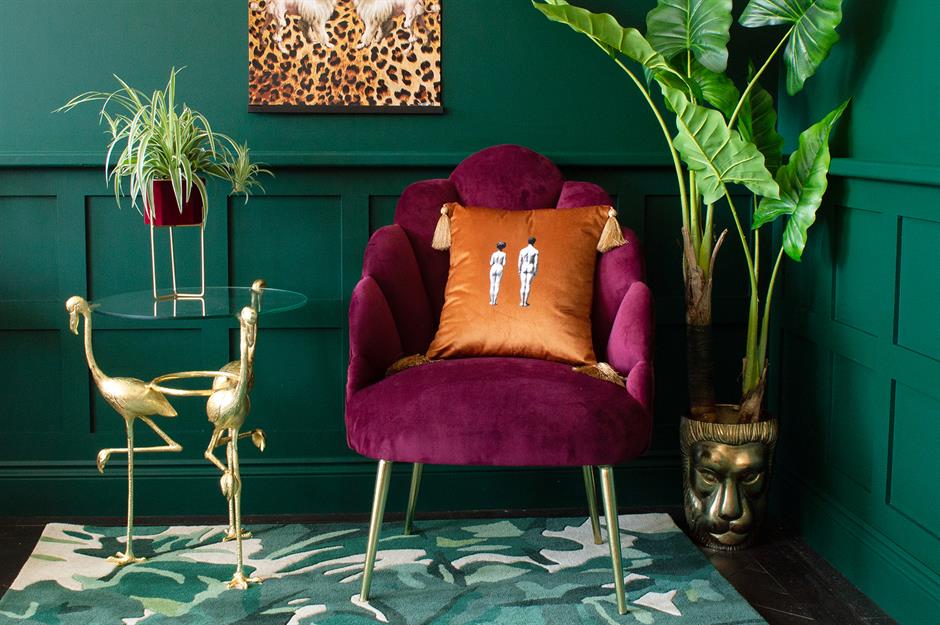
The pioneering Victorian interior designer William Morris once said, "Have nothing in your house that you do not know to be useful, or believe to be beautiful". It's a maxim that all designers – amateur and professional – can still benefit from today. If there's something you love, whether it's a piece of furniture, an artwork or collection, think about how best to work your scheme around it. It's pieces like these that create an individual and cherished interior.
Map out a gallery wall
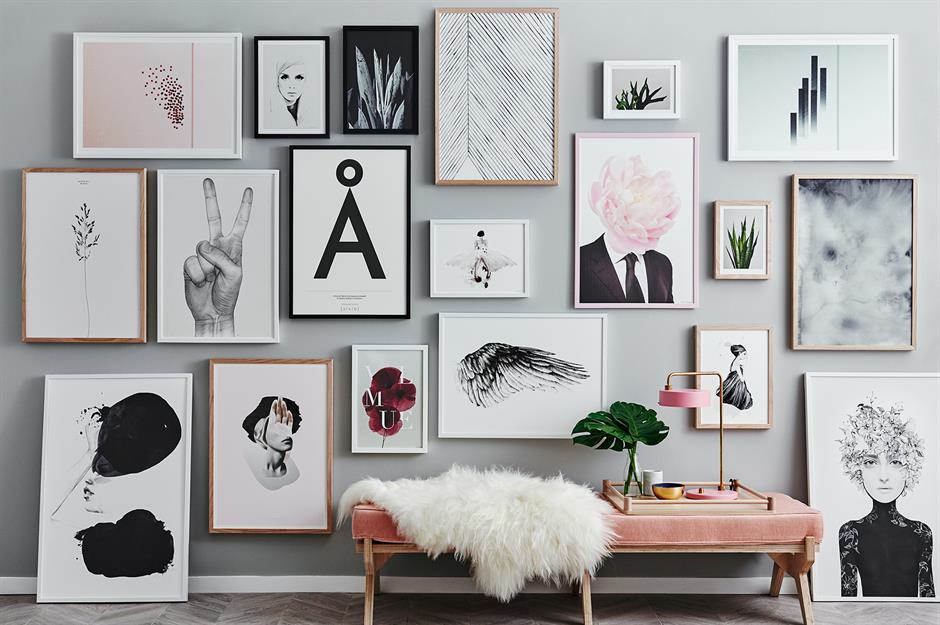
A staple in the interior design repertoire, the gallery wall is an exercise in creativity and balance – but not even the experts get it right the first time. To achieve that Instagram-worthy display, map out your design beforehand. Cut out cardboard templates of each frame you want to hang and arrange them across the wall with Blu Tac until you find a combination that works, then simply swap for the real thing!
Get your rug right

Rugs are the ultimate way to draw an interior design scheme together, but go too small and the rug will look lost and your scheme will fall flat. Ideally, a rug should be big enough that some or all of your furniture's feet can sit on it – using a tiny rug under a coffee table will only make a room feel poky. In a dining area, you should be able to sit at the dining table with all four of your chair's feet on the rug. Consider using them in different ways, too – whether it's a few rugs overlapping each other or even hung in place of wallhangings.
Run riot with a stair runner

Entrance looking a little lacklustre? Interior designers know that even the most hardworking hallway decor needn't scrimp on style. Want to make a narrow hallway or staircase look wider? Rather than covering it all in carpet, fit a runner leaving about 8cm of bare floor on either side. The runner divides up the space, drawing the eye into the distance and tricking it into thinking the area is wider than it is.
Opt for non-toxic paint
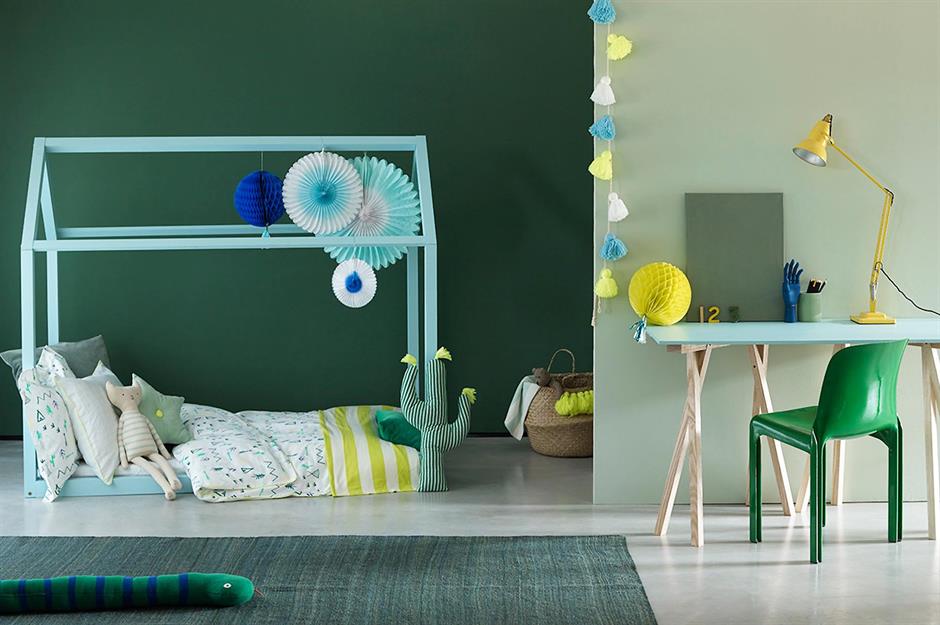
When choosing paint, it's easy to put colour first and forget other factors, such as how the paint might affect the environment or your health. Consider buying paints made from natural materials that contain no (or very low quantities of) harmful volatile organic compounds (VOCs). They may be a bit pricier, but they're a worthwhile investment, especially for a children's room or when decorating a nursery.
Layer soft textures
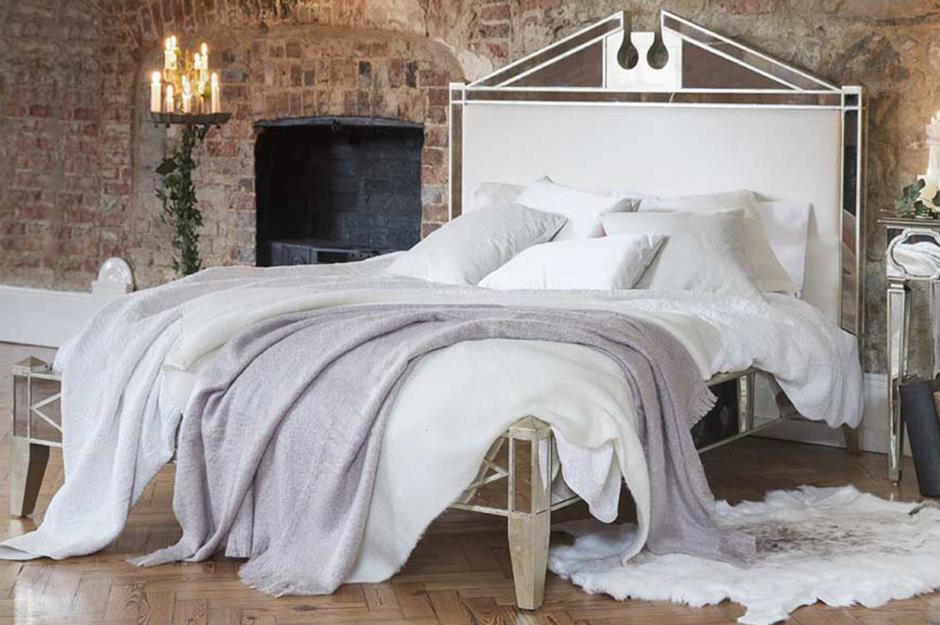
The French Bedroom Company
Texture is key to creating a successful design scheme, especially if you're working with a neutral colour palette. To keep a room interesting, incorporate different tactile materials throughout the space, from soft woollen throws to silky cushions, rough brick walls to glossy mirrored finishes.
Celebrate the ceiling
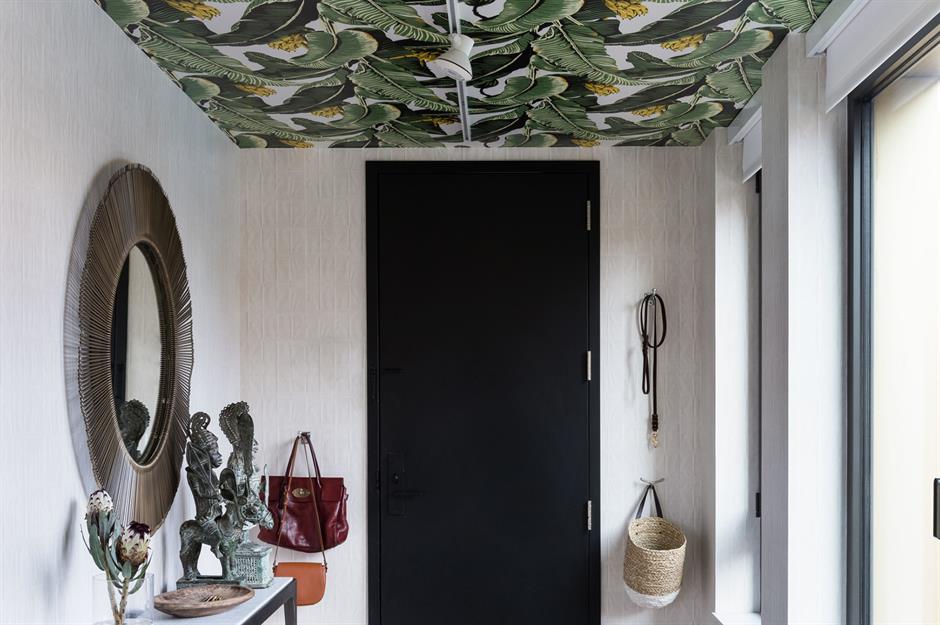
Claire Esparros for Homepolish Design Crystal Sinclair
Ceilings don't tend to get a lot of love on the whole. Boring old white with perhaps a bit of colour on the cornicing is usually about as exciting as it gets. But creating a statement ceiling by painting, papering or even adding a mural as designer Crystal Sinclair has done here can give a room an instant lift. Painting a ceiling in a dark colour can make a space feel warm and cosy, while metallic paints or faux tin tiles give it a more Art Deco look.
Start with a sofa
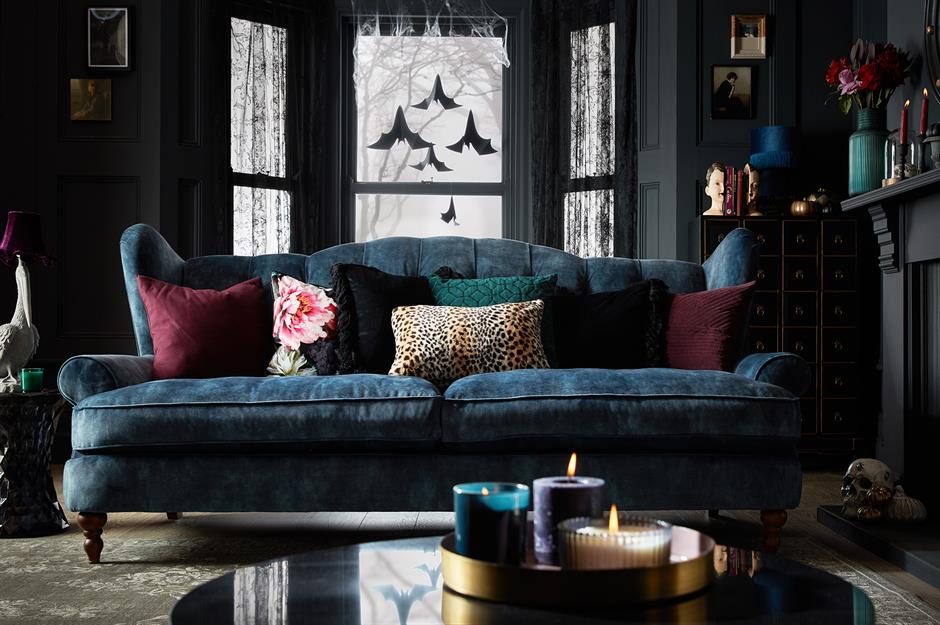
Trying to design a successful open-plan living space?When you're working with a blank canvas, it can be difficult to decide where to start. Rather than getting bogged down with accessories in your living room, start with the sofa. Usually the largest piece of furniture in the room, it's easiest to plan your layout around this key feature. When it comes to positioning, consider the light, thoroughfares and any views you might want to utilise. This also works for other rooms, whether it's the bed in a bedroom or a dining table in an entertaining area.
Add atmosphere with mood lighting
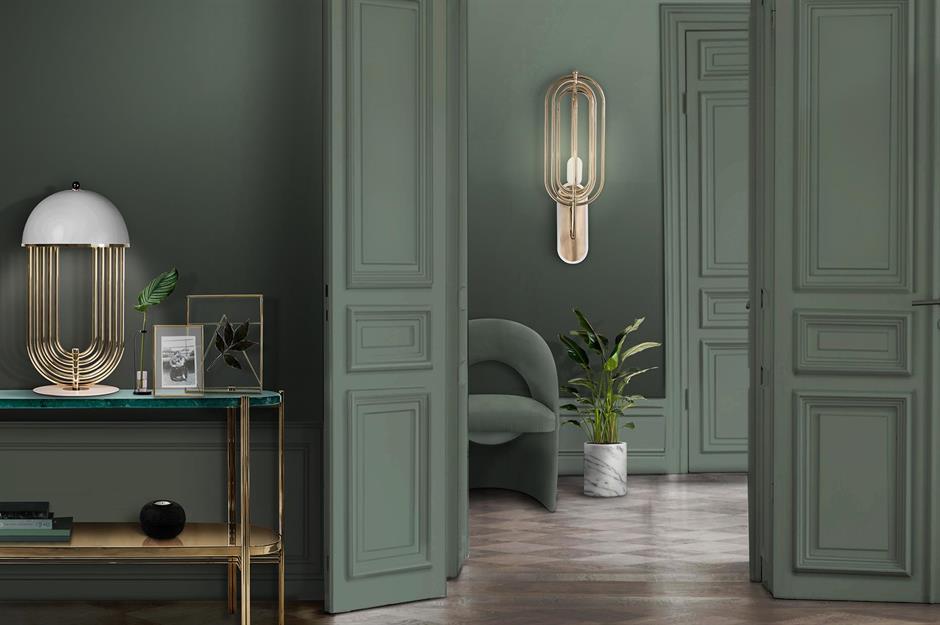
Mood lighting can instantly create the right atmosphere. Dimmer switches give you the power to use the same bulb as either general lighting or mood lighting, so installing them in every room will instantly boost the versatility of your lighting scheme. If you're using LED lighting, make sure you choose dimmer switches that are LED-compatible so the bulbs glow brightly enough and don't flicker. Lamps are ideal for creating a cosy glow at night, and candles, lanterns and wall lights will all help add to your room's overall ambience. Also, try using LED-strip lights to highlight an alcove or under shelving to highlight your favourite features.
Double-up with two-tone walls
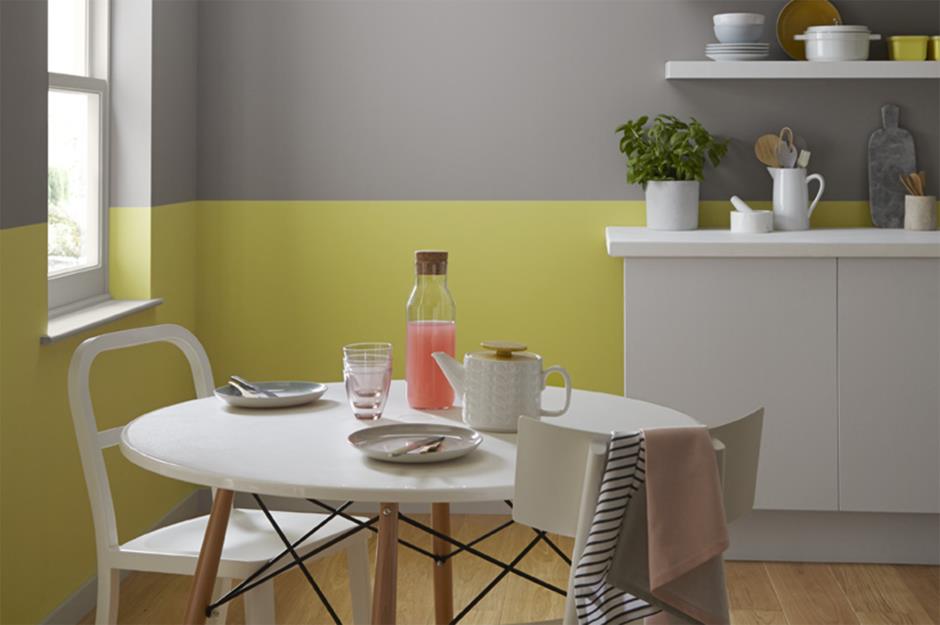
If you live in a new-build, chances are your home may be short on architectural features. Why not try painting some in? You could go for a two-tone wall that changes colour at dado rail height, as shown here, or have a different colour starting at picture rail height and continue onto the ceiling to add height. It's an affordable way to add interest to your home and very easy to update, too.
Frame off-cuts for a quirky touch
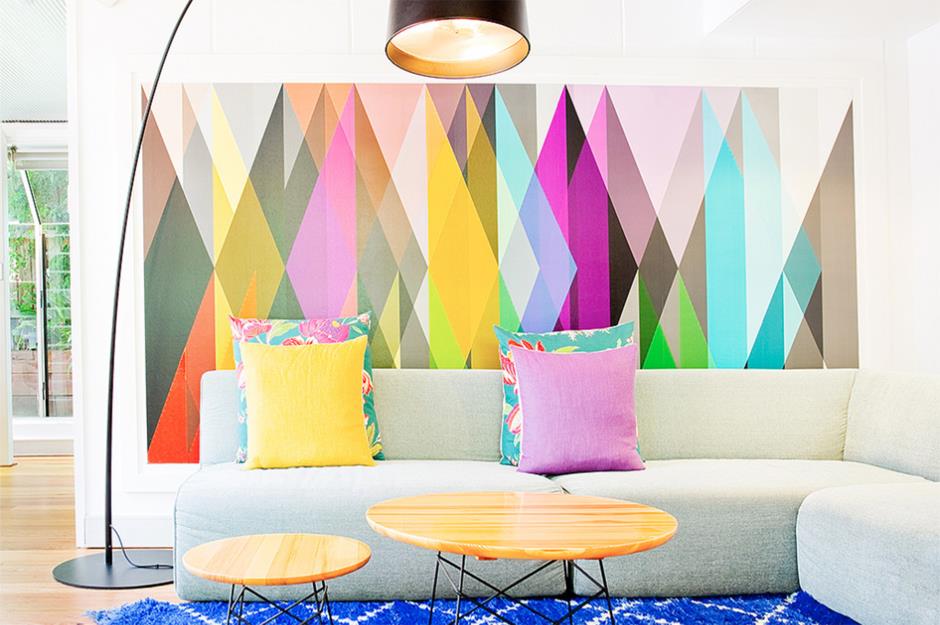
Bronwyn Poole by Touch Interiors
An affordable way to create a piece of oversized art like this colourful number by Touch Interiors is to frame a striking wallpaper or piece of fabric. You can save even more money by searching for off-cuts online, or combining different samples to give a patchwork effect.
Hang curtains high
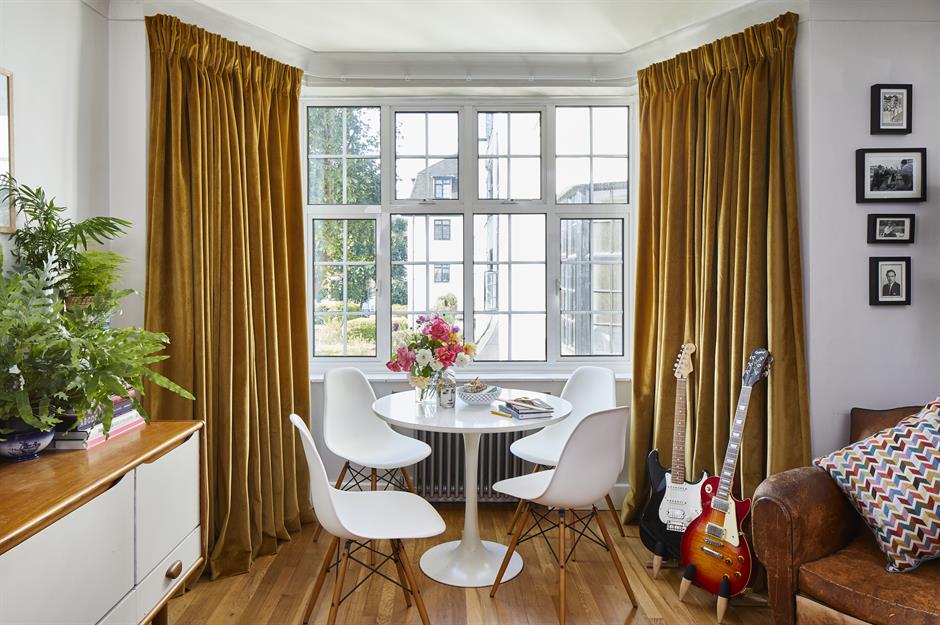
Curtains can make or break a room. Opt for a luxurious fabric, such as velvet, to create an opulent frame for your windows. One of the most common curtain mistakes is to hang them just above the top of the window frame, making the window – and the room – feel squat. Hang them high to create a grand impression and make the room feel taller.
Balance bathroom lighting
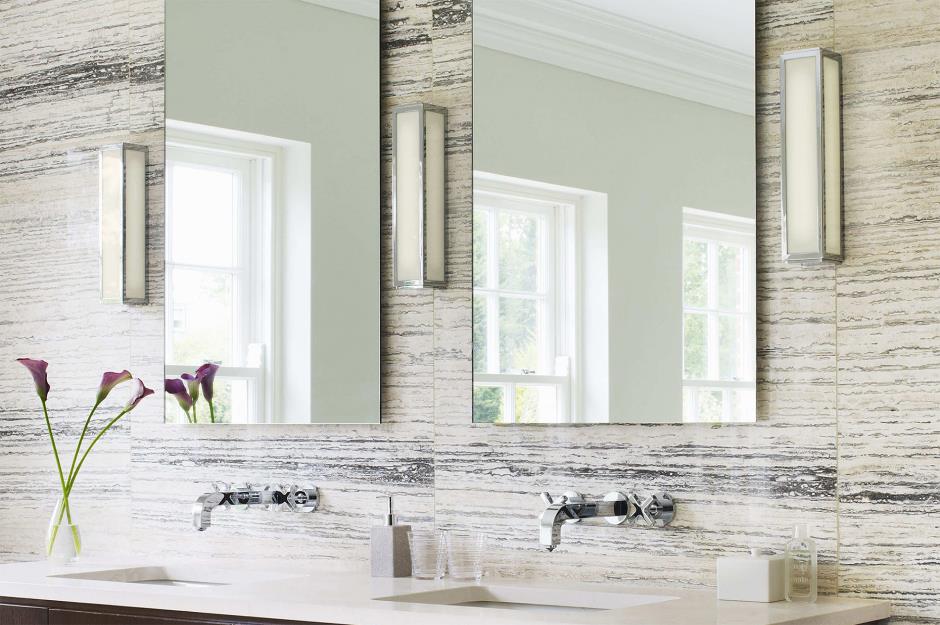
Not many of us would claim to look our best in the morning, but you can give yourself a head start by getting your bathroom lighting right. Never hang a bathroom sconce above the mirror – it will only make you look washed out. Instead, install sconces on either side of the mirror as they'll light your face evenly and frame you in your most flattering light. Placing downlighters around the sides of the room, rather than the middle, will also help to avoid shadows.
Repurpose wallpaper in unexpected ways
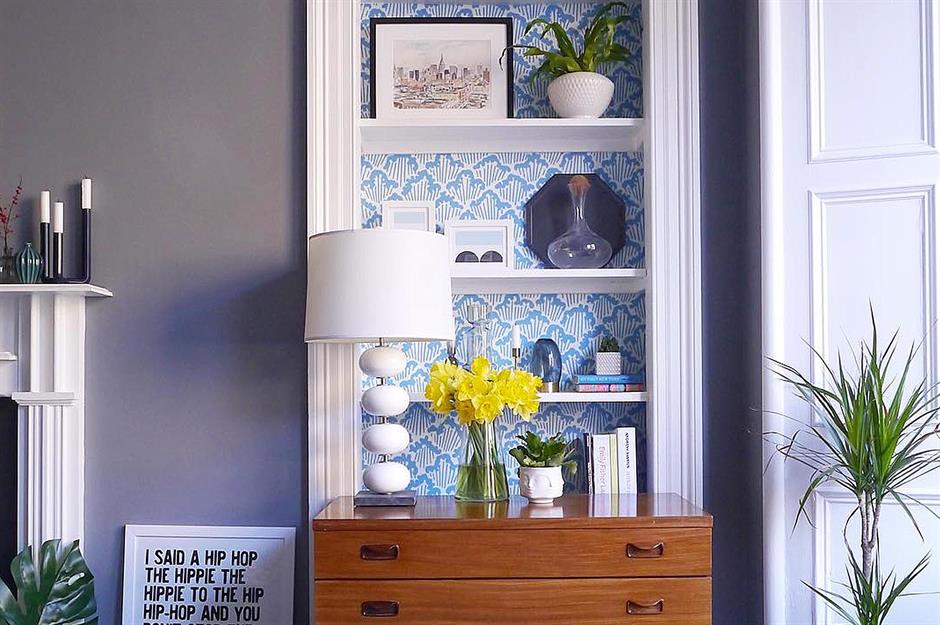
Looking for wallpaper ideas to give instant wow-factor? Try using it in unexpected places to line cupboards, drawers and shelving as Liz Engelsen has done here. This is a subtler, cheaper way to introduce a statement pattern into your scheme than papering a whole wall. Again, keep an eye out for money-saving off-cuts if you don't need to use a whole roll.
Upcycle kitchen cabinets
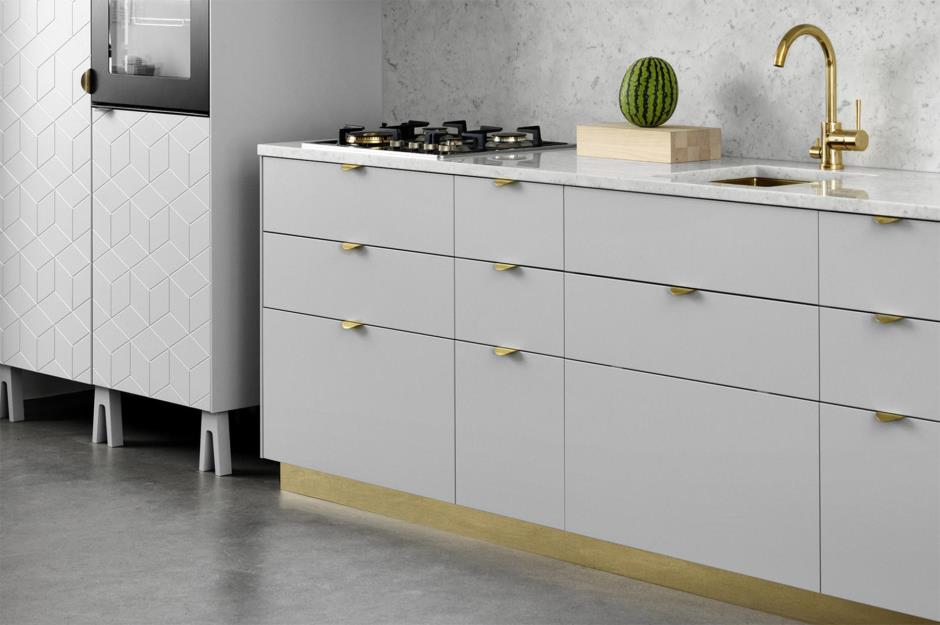
A good interior designer knows when it's time to replace an item and when a perfectly good piece can be repurposed to create something fabulous. Kitchens are an excellent case in point. For example, if you have basic IKEA kitchen units that are in a good condition, you can give them a fresh look by fitting them with new doors and hardware from kitchen upgrade companies such as Superfront, Reform and Plykea at considerably less cost than buying new units.
Play with pendant lighting
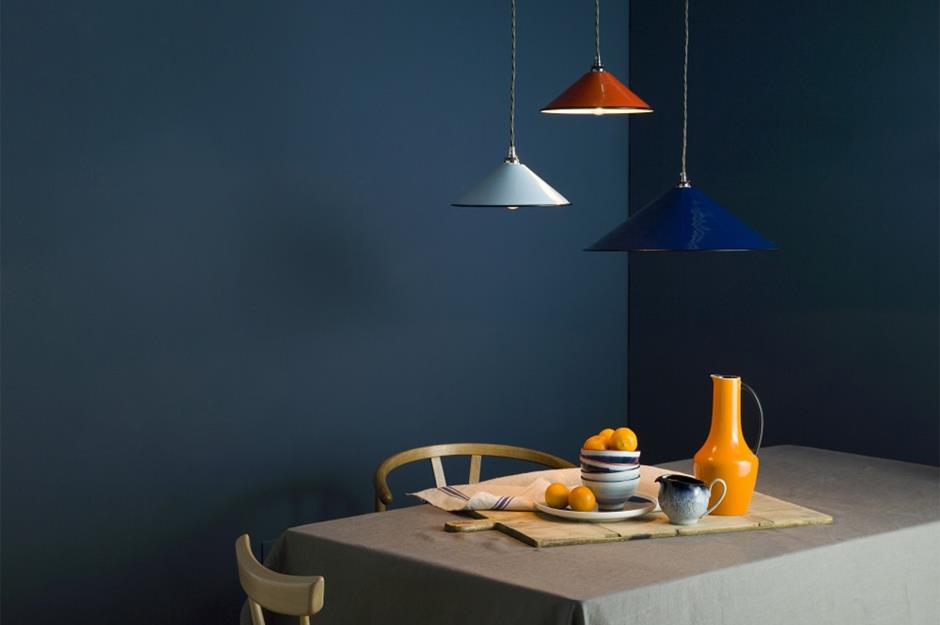
One of the most common questions interior designers are asked is how high to hang pendant lighting. The answer depends, to some extent, on the size and style of your light, the height of your ceilings and the height of the people living in your home, but here are some useful guidelines: in a living room or hallway, hang your light about 2.4m from the floor, above a dining table, leave about 75cm between the tabletop and your pendant. If you're hanging them above an island for statement kitchen lighting, leave about 80cm between the countertop and the bottom of the light shade.
Take the long view

Look at the flow of your home and take into account the room that's beyond the one you're painting. The door frame in this picture has been painted in the same pale pink as the wall in the room beyond, tying the two spaces together. It doesn't have to be a door frame, either – look at highlighting other areas of woodwork, from picture rails and skirting to window frames and banisters.
Never stop editing
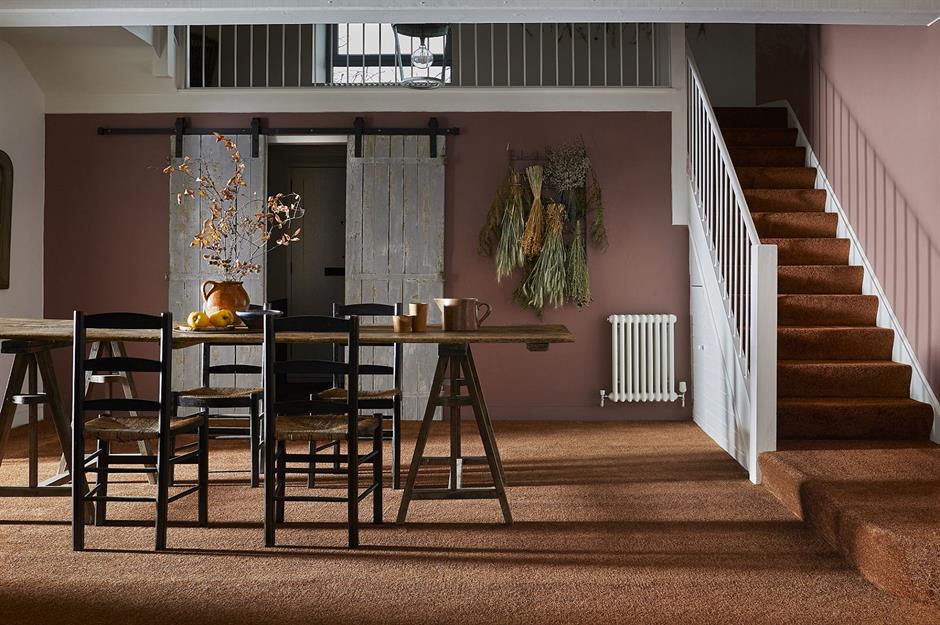
When it comes to interior design perfection, your work is never done. While your wall colours, furniture and floor coverings might remain the same for years, there are plenty of ways to give your interior spaces a freshen up, without having to redecorate. Update your door handles, upcycle a piece of furniture, change up rugs and cushions, alternate the images in your gallery wall or try out some new lighting to enhance your favourite spaces with minimal effort.
Tape it out

When you're planning the furniture for a room, it can be easy to over order or underestimate the space you actually have to hand. Yet space planning is key to good interior design. In order to avoid overcrowding and creating an in-cohesive design, grab some masking tape and plan out your furnishings, based on the measurements of the items you're keen to buy. This will give you an idea of layout, floor space and if anything just doesn't quite fit.
Loved this?Like and follow us on Facebook to see more inspiring interior design ideas
Be the first to comment
Do you want to comment on this article? You need to be signed in for this feature
Http Www.hgtv.com Design Rooms Kid-rooms How-to-make-a-diy-interior-dutch-door
Source: https://www.loveproperty.com/gallerylist/71465/65-secret-interior-design-tips-from-the-experts